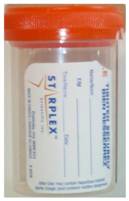Yeast Culture (see Fungus Culture Other)
| Test Name | Fungus Culture (Other) |
|---|---|
| Alternate Name(s) | (Information Unavailable) |
| Laboratory Module | Microbiology |
| Ordering Mnemonic | FUNGUS O A further description of the site from where the specimen was collected should then be entered. For instance: SPU- Sputum expectorated ETT- Endotracheal Tube FNAIL- Fingernail The F9 lookup key will give a list of possible sources. Use the free text comment section to define the exact location of where the specimen was obtained from for a more accurate processing of the specimen.
|
| Specimen Type | Investigation for systemic fungus: Respiratory samples such as sputum, tracheal aspirate, or bronchoscopy samples. For all other yeast or fungus, use the Blood Culture collection method with BacT/Alert bottles, see blood cultures for more information. Investigation for Yeast: Ears, eyes, respiratory samples (e.g. sputum, tracheal aspirate, lung biopsy or bronchoscopy samples), skin, throat, urine and vaginal samples may be collected. Investigation for dermatophytes (ringworm or tinea): Hair, nails or skin samples are appropriate. |
| Collection Container | (Information Unavailable) |
| Container Information |
or
|
| Collection Information | Respiratory samples: Sputum, tracheal aspirate or bronchoscopy samples should be collected directly into a sterile container or may be submitted within the endotracheal aspirate tube. Hair - Select broken or scaly hair that is most likely to be infected. If possible, choose hair that fluoresces when exposed to a Wood's lamp. Pluck at least 10 hairs out by the roots and send root portion for culture. Nails - Clean with 70% alcohol. Scrape deeply enough to obtain recently invaded tissue. Initial scrapings should be discarded as they are often contaminated. Whole pieces of nail may be submitted. Skin - Clean area with 70% alcohol. Scrape the active peripheral edge of the lesion with a scalpel to obtain flakes of skin. Note: Hair, nails and skin should be transported in black paper envelopes available from the Microbiology Lab.
|
| Test Schedule | Daily |
| Routine Turnaround Time | Preliminary: 1 to5 weeks Final: 1 to 5 weeks |
| Stat Turnaround Time | Preliminary: 1 to 5 weeks Final: 1 to 5 weeks |
| Reference Interval | (Information Unavailable) |
| Critical Values | As growth is detected and identified the information is made available to the health care provider. |
| Lab Process Notes | (Information Unavailable) |
| Storage and Transport | Viability may decrease with prolonged storage so transport as soon as possible. The specimen should then be refrigerated. |
| Test Referred To | Public Health Laboratories, Hamilton |





